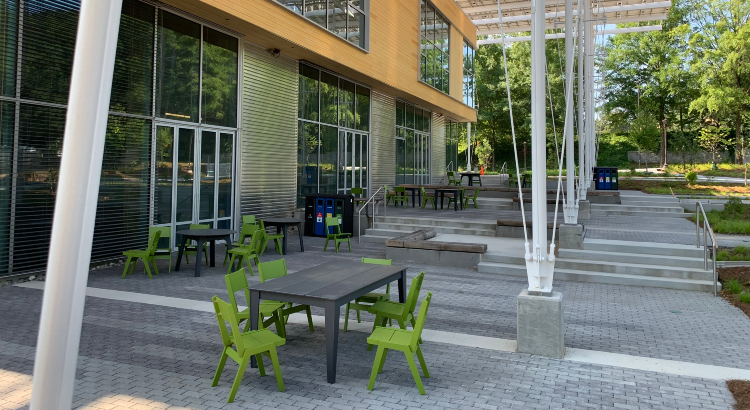The Living Building Challenge promotes the use of patios, porches, gardens and green roofs for many reasons. Potentially reducing the threat of Covid-19 can be added to the list.
Living Building projects already are expected to restore natural systems on sites that surrounding them. Biophilic design, also mandated under the standard, encourages a closer connection to nature. And usable outdoor space cuts down on the need for more energy-intensive conditioned spaces.
Add this: The outdoor environment happens to be less hospitable to SARS-CoV-2, the virus that causes the COVID-19 disease. As the New York Times recently put it: “Interviews show a growing consensus among experts that, if Americans are going to leave their homes, it’s safer to be outside than in the office or the mall. With fresh air and more space between people, the risk goes down.”
So — for the same reasons that restaurants are emphasizing patio dining over indoors — building and health experts are arguing that programmable outdoor space can be put to good use during the pandemic.
“Suddenly places like balconies and porches — those in-between spaces — are so much .more important now to all of us,” HKS Research Director Upali Nanda said in an interview.
In a post on its company blog called “Could Low-Tech Design Prevent Climate Change-Influenced Pandemics,” Gensler Sustainable Design Practice Director calls for more “Dis-conditioning.” He writes:
Finding opportunities to shift program spaces outdoor — or even to covered, open-air, perimeter-adjacent areas — relieves the need to heat and cool these spaces. If shielded from the sun and wind appropriately, these spaces can be used throughout the year in certain climate zones.
Usable outdoor spaces are, of course, as old as the fire circle. Now, perhaps, they will reassert themselves as legitimate parts to any building.
In the photo above of the Kendeda Building for Innovative Sustainable Design, you can see two such spaces: A gigantic patio shaded by the building’s massive solar array is terraced to allow for multiple meetings and classes; and a green roof (barely visible in the upper left corner) contains an outdoor lab classroom.
— Ken Edelstein
This post is part of a series on “Nine COVID-combating features in a Living Building.” Click here to view the main article.


